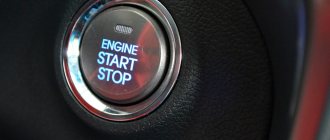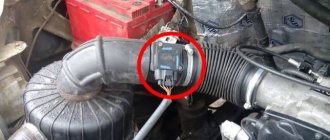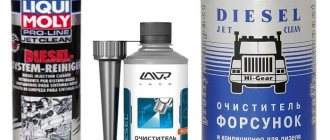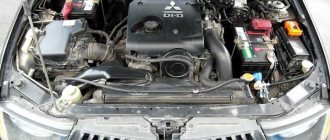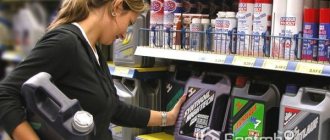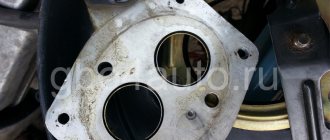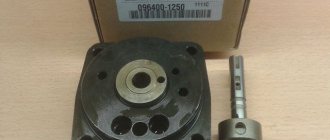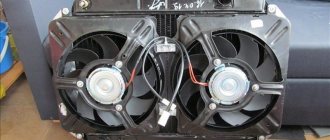An injector (in the everyday life of mechanics and car enthusiasts, this part is often called an injector) is a key element of a modern diesel engine. Its main purpose is to efficiently supply fuel to the combustion chamber, having previously dosed and atomized the required volume. Taking into account the rather difficult operating conditions of diesel engines (high temperature and pressure), the performance of the entire power unit largely depends on the quality of manufacture of the injector components and the perfection of the design. To monitor the health of the engine, you must first understand the design and operating principle of a diesel engine injector. Together with the engine service center specialists, we will try to consider the main points, classification and differences in the design of injectors.
Purpose of nozzles
The main functions assigned to the nozzle include:
- fuel supply to the cylinder;
- sealing the combustion chamber;
- spraying onto fine particles;
- the most uniform distribution of diesel fuel throughout the combustion chamber;
- abrupt start of fuel injection and equally rapid completion of the process;
- precise dosing of the required amount of fuel.
The operation of diesel injectors is associated with an aggressive environment. Constantly changing pressure, which can reach 11 MPa. Temperature effects also wear out the injection system. Fuel supply occurs at a temperature of about 700°C. When diesel fuel burns, the nozzle is exposed to temperatures of 2000°C.
For stable engine operation, the injector must provide optimal dispersion. The higher the degree of fragmentation of diesel fuel droplets, the greater their total surface area. This allows the fuel to burn in a shorter period of time, which has a positive effect on environmental friendliness, dynamics and efficiency. In this case, the drops should not be too small, since in this case they will not reach the edges of the combustion chamber. At the moment, fuel injectors inject diesel fuel at a speed sufficient to ensure complete filling of the entire volume with a particle size of 30 to 50 microns.
The principle of operation of a diesel engine injector - briefly about the complex
The main purpose of such parts is to meter and atomize fuel, as well as hermetically seal the combustion chamber. As a result of research, pump injectors were developed, which are installed in each cylinder separately. The operating principle of the new type of diesel engine injector is that it operates from the camshaft cam through a pusher. Fuel is supplied and drained through special channels in the cylinder head. Fuel dosing occurs through the control unit, which sends signals to the shut-off solenoid valves.
The pump injector operates in pulse mode, which allows for preliminary fuel supply before the main injection. As a result, engine operation is significantly softened and the level of toxic emissions is reduced.
Fuel injectors in most cases require simple maintenance; most often, in order to return them to working condition, it is enough to simply clean and rinse them. Regardless of how many injectors there are in the engine, it happens that when you press the gas pedal sharply, jerks and dips are felt or the power is noticeably reduced, the engine begins to operate unstably at low speeds, which means that the injector channels are clogged with hard tarry deposits. What to do?
Historical excursion
At the stage of the advent of internal combustion engines, Rudolf Diesel planned to use coal dust blown through a nozzle with compressed air as fuel. When burning coal, little heat was produced per unit mass, which forced the scientist to switch to higher-calorie fuel. Gasoline could not be used due to its explosiveness. Preference was given to kerosene.
In 1894, Rudolf Diesel managed to successfully start an engine that was supplied with fuel using a nozzle. A pneumatic compressor was used to carry out the injection. The pressure it created exceeded the force generated inside the cylinder. Because of this, this type of engine is called a compressor diesel engine.
Hydraulic fuel injection appeared a little later. It is used to this day, constantly being improved. The inventor of this method of fuel supply is the French engineer Sabate. He also suggested doing multiple injections. By supplying diesel fuel in several stages, it is possible to obtain more useful energy from a unit of fuel.
In 1899, Arshaulov designed a diesel engine with a high-pressure fuel pump, paired with a compressorless nozzle. This technical solution turned out to be successful, which is why diesel engines with fuel injection pumps are still used today.
The most modern diesel power systems have computer controlled nozzles and adapt to the operating mode of the engine. Depending on the type of combustion chamber, variations in fuel supply are possible. To ensure stable operation of diesel engines of various types of mixture formation, multi-hole and pin nozzles appeared.
Methods for cleaning injectors
During operation, the fuel injectors become clogged. This occurs due to low-quality fuel, as well as untimely replacement of the fine and coarse fuel filter. Subsequently, the performance of the injector decreases, and this is fraught with an increase in the temperature in the combustion chamber, which means rapid wear of the piston.
It is easiest to wash distributed injection nozzles, since they are easier to dismantle for high-quality cleaning on a stand, and it is possible to equalize the throughput and spray angle.
Cleaning with Wynns type washing liquid on a stand. The nozzles are installed on a stand, a liquid of at least 0.5 liters is poured into the tank, the nozzle of each nozzle is immersed in flasks with divisions in ml, which allows you to control the performance of the nozzles. On average, cleaning takes 30-45 minutes, after which the O-rings on the injectors are changed and they are installed in their place. The frequency of cleaning depends on the quality of the fuel and the range of replacement of the fuel filter, on average every 50,000 km.
Liquid cleaning without dismantling. A fluid system is connected to the fuel rail. The hose through which the cleaning liquid will be supplied is connected to the fuel rail. The mixture is supplied under pressure of 3-6 atmospheres, the engine runs on it for about 30 minutes. The method is also effective, but there is no possibility of adjusting the spray angle and productivity.

